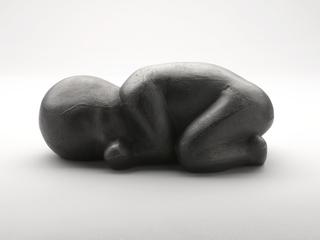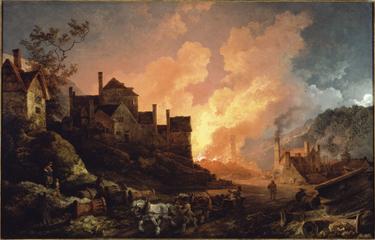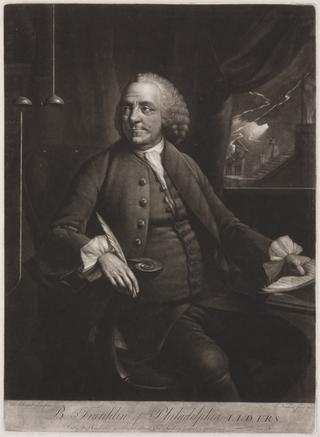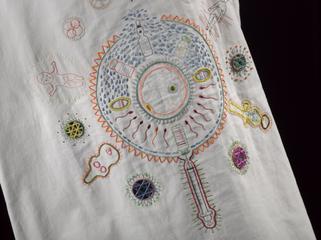
Portrait of Sir William Herschel, astronomer, 1814




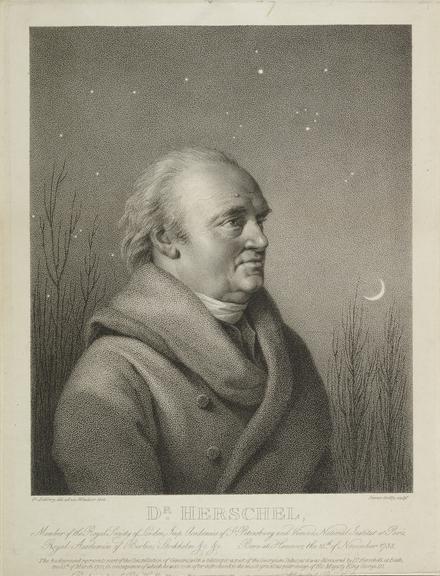



Engraving; stipple. Portrait of Dr. William Herschel (1738-1822), astronomer, Engraving by James Godby of a drawing made by Fr. Rehberg in 1814. Platemark 31x22.6cm, image 24.2x19.7cm [Cut within platemark to 30x24cm, removing imprint]. Dedicated to Sir Joseph Banks. - With detailed citation of Herschel. - Portrait of William Herschel, HL to R before sky with crescent moon and stars; "The background represents part of the Constellation of Gemini, with a telescopic aspect of the Georgium Sidus, as it was discovered by Dr. Herschell at Bath, ...1781"
This James Godby engraving of William Herschel from a drawing by Rehberg in 1814 shows him in old age. The portrait is composed to celebrate Herschel's discovery of the planet Uranus. He is shown against a backdrop of the night sky showing the stars of the constellation of Gemini. It was in this area of the sky that Herschel made his famous discovery on the 13th March 1781. Famous overnight he was transformed from an obscure musician to a celebrity for uncovering the first new planet since Antiquity. Appointed royal astronomer by George III, he acknowledged his royal patron by naming the new planet, 'Georgium Sidus' (Georgian Star). Against his will the name was later dropped in favour of Uranus.

